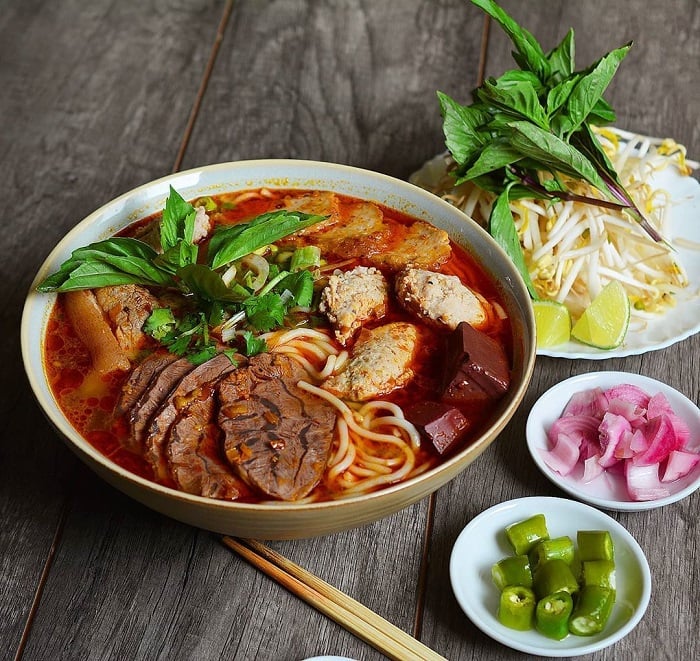Referring to Hue specialties, it is definitely impossible to ignore the famous Hue beef noodle soup with a rich, mildly spicy flavor typical of the central people that cannot be found anywhere else. A full bowl of Hue beef vermicelli usually has beef, blood, hoof, beef rolls and crab cakes, especially the vermicelli must be big and thick, not small noodles like in the north or south.

Source: Collected internet.
The streets paint the lives of Vietnamese people. The streets here are not just for traveling. Streets and sidewalks are also places to shop, eat, meet for a cup of coffee, get a haircut or rest. Big cities are always full of life with the roar of millions of motorbikes, where you can feel a constant source of energy bubbling on every street.
The Vietnam National Gene Bank preserves 12,300 varieties of 115 species. The Vietnamese government spent US$497 million to maintain biodiversity in 2004 and has established 126 protected areas including 28 national parks. Vietnam has 2 world natural heritage sites: Ha Long Bay and Phong Nha - Ke Bang National Park and 6 biosphere reserves including Can Gio, Cat Tien, Cat Ba, Kien Giang, and River Delta mangrove forests. Hong and Tay Nghe An.
Vietnam - a country winding in an S shape on the East Sea coast, has 54 ethnic groups with resilient, indomitable people, standing tall in the face of many wars of invasion; A country with lands with thousands of years of history. With beautiful natural scenery and precious and abundant natural resources, we - the children of Vietnam - are often proud when talking about our Fatherland, our homeland. Listeners are invited to join VOVLIVE to experience the beauty of the country and
Hang Market (Hai Phong) was formerly the market of an ancient village called Du Hang (17th-18th centuries). The Du Hang village area was formerly agricultural land and a traffic hub, so Hang market became a place to meet, exchange, and buy and sell plants, animals, and farming utensils. The urbanization process spread to the suburbs, so today Hang Market is located entirely in the inner city, in Du Hang Kenh ward, Le Chan district, Hai Phong city. Even though many years have passed, the customs of exchanging agricultural goods of c